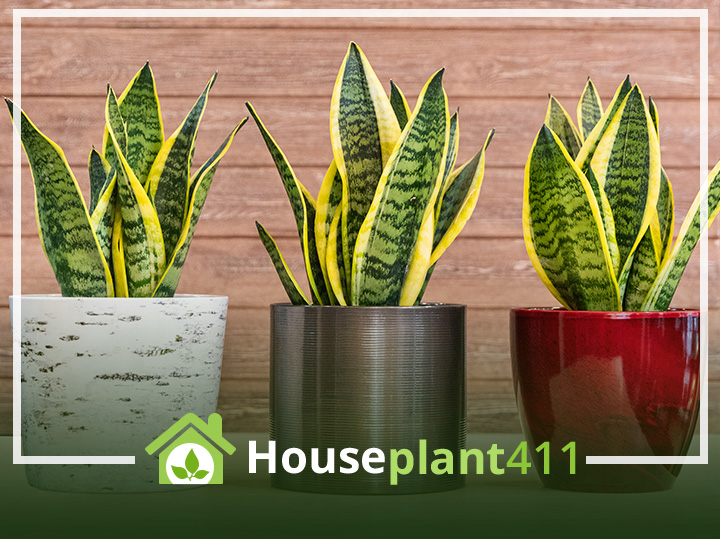Snake Plants are an all-time favorite when it comes to Indoor house plants. They look good, add flair to living spaces, and are highly recommended because they require relatively low maintenance. These plants are incredibly resilient and have some admirable qualities, making them an excellent option for beginners.
Snake plants are adaptable in terms of location. They require little care or watering and function as an extremely powerful detoxifier. If you are interested in knowing how you can maintain your snake plants, keep reading!
Snake Plant Care and Maintenance
Watering Requirements
The Snake Plant is not very demanding when it comes to water intake. More often than not, a snake plant dies not due to a lack of water but because of an excess of it. Watering a Snake Plant can be tricky as it barely ever requires water.
As a rule of thumb, water a snake plant only when its soil dries. Overwatering a snake plant can lead to its root rot, a danger sign for any plant. If you are in warmer conditions, water a snake plant once in two weeks. The plant can go up to once in two months for the winter season. Overall, snake plants have evolved to thrive without much water.
Light Requirements
Snake Plants are highly adaptable when it comes to light. They don’t need direct sunlight for extended periods and thrive with indirect sunlight or shade. Snake plants are very versatile regarding their light requirement, so you can’t go wrong here. If you notice yellowish-white spots on your snake plant, they could be indirectly linked to the plant’s overexposure to sunlight.
Soil Requirements
Snake Plants bloom best in a soft and loose mixture of earth and a bit of sand. These plants thrive in well-drained mixtures. So, be sure to take that into account when you plant them for the first time. When selecting suitable soil for your snake plant, look for an airy, loose, and light potting mix. A multi-purpose potting mixture or an average cacti mix are good options for consideration.
Fertilizer Requirements
Snake Plants are high in survival and low maintenance. Staying true to their reputation, they have minimal fertilizer demands, which you can even overlook in some cases. At the bare minimum, never fertilize your snake plant in winter; that’s a big no. Secondly, if you want to fertilize them, go for a liquidated slow-release cacti fertilizer that won’t saturate the soil and let nature take its course.
Pruning
Pruning is necessary for tall plants like snake plants, be it cutting off damaged leaves from the upper half of the plant or removing leaves at the soil line to promote further growth. Pruning is something best done during the growing season.
Pruning in the off-season will likely cause additional stress on the plant. You can prune a plant to control its height. However, it’s encouraged in the growing season for optimal results.
Propagation
Snake Plants can be propagated via water rooting, root division, leaf-cutting, or simply by planting new offspring. Regardless of the method adopted, you need to know the process in depth so that the plant or its new propagation does not get damaged.
The best time to do this would be spring, and the second best would be summer. Regardless of the time, it would be best to wait for the plant offspring to grow to at least 4 inches in height and avoid the temptation to propagate it when it is smaller. Snake Plants are very resilient but require some time to grow roots. You may have to wait two months before you notice new growth.
Anti Pest Care
Snake plants are mildly prone to the common pests in house plants. These include Mealybugs, Spider Mutes, Scales, Gnats, and Aphids. The main causes for a pest infestation are overwatering and incorrect air circulation owing to the tightness of the soil.
Pests can be taken off manually if spotted. A gentle spray of neem oil or water will do the job.
These are the primary care instructions that will make sure you can care well for your Snake Plant. Now, let’s dive into the common challenges faced by Snake Plant owners and how to overcome them.

Snake Plants: Common Problems and Solutions
Yellow or Brown Leaves
Snake Plants have a healthy, glossy shine over them if they are in good condition. If you notice yellow or brown leaves, it could indicate different conditions, like overwatering, pest infestation, and even root rot.
Usually, these problems can be controlled by the correct administration of water dosage, which solves problems related to overwatering and root rot. For pests, the options include picking them off by hand one by one or spraying on a gentle spray of neem oil to prevent further spread and kill the already present pests.
Curling Leaves
If you notice curling in your snake plant leaves, get a magnifying glass and inspect your leaves closely. You will see small black bugs, confirming that your plant has had a pest invasion. Curling leaves can be either cut if they are too severe or, like other pest infections, be treated with neem oil spray. Regardless of your choice, know that curling leaves are a big sign of danger.
Drooping Leaves
Drooping Leaves are uncharacteristic of Snake Plants as they are very firm and tall in their ideal conditions. If you notice drooping or falling over leaves, it’s probably either due to overwatering or the soil not being well drained. If you notice drooping leaves, cut down on watering sessions and shift the plant to a brighter location. If the problem persists, then try changing the soil.
Final Word
We hope that with this snake plant, you will feel much more educated on how to care for and maintain your snake plant. Happy planting!

